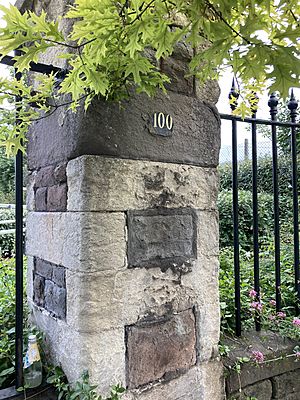Eastville Workhouse facts for kids
The Eastville Workhouse was a special building in Bristol, U.K., located at 100 Fishponds Road. It was also known as the Barton Regis workhouse. This building was used to help people who were very poor and had nowhere else to go. Later, in the 1920s, it became a home for older people. The workhouse building was taken down in 1972 to make space for new houses.
What Was the Eastville Workhouse?
The Eastville Workhouse was built in 1847. It was designed by an architect named Samuel T. Welch. At first, it was called the Clifton Poor Law Union workhouse. A "Poor Law Union" was a group of local areas that worked together to provide help for people in need.
Why Were Workhouses Built?
Workhouses were created to offer a place for very poor people to live and work. In exchange for food and shelter, people living in workhouses had to do various jobs. The workhouse was renamed in 1877 to the Barton Regis workhouse. This change happened because people in Clifton felt a "stigma," or a bad feeling, about the name. They wanted to remove this negative connection.
Remembering Those Buried There
In 2012, people discovered the forgotten burial ground of the workhouse. This area was known as Rosemary Green. A local history group found out that over 3,500 people from the workhouse were buried there between 1855 and 1895. When the workhouse was demolished, their remains were later moved.
A special memorial was put up at Rosemary Green in November 2015 to remember these people. In 2019, a second memorial was placed at Avonview cemetery. This is where the remains were reburied in graves that did not have names on them. These memorials help us remember the people who lived and died at the Eastville Workhouse.


